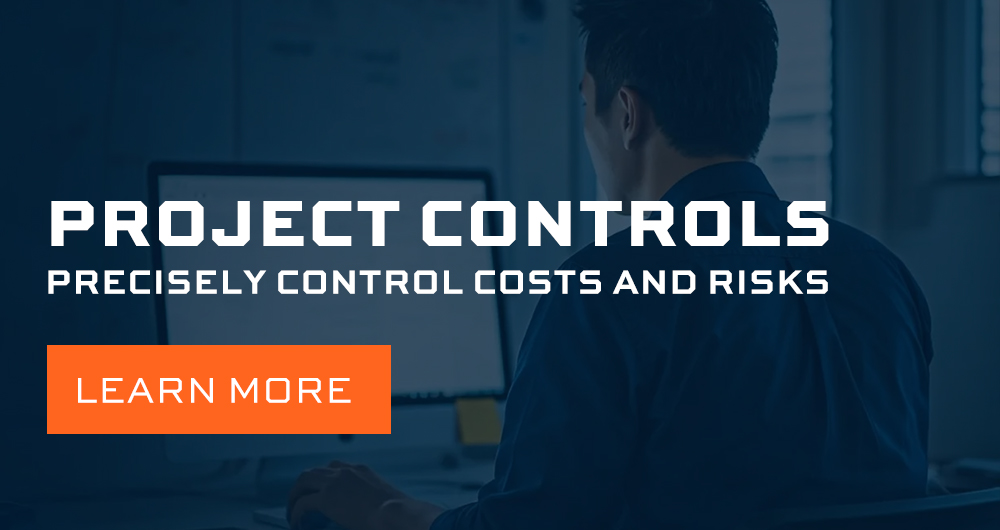To many folks in the construction industry, risk is a four-letter word.
In fact, when I discuss the topic of risk with our customers, I sometimes wonder how anything ever gets built. The categories of risk abound. Sure, there’s the triumvirate of scope, time and cost to which I like to add safety and quality, to come up with the “five-sided triangle” of project controls.
But risk reaches far beyond these factors to include numerous uncertainties and many questions.
Will we have access to a skilled local labor pool? Will key materials be available? Are we competing for specialty trades during a hot market? Do we have ample staff to properly plan and prepare for execution? Are we working overseas where we now need to factor in seasonality, the regional political climate, and fluctuations in currency exchange rates? Have we considered the logistics of getting long lead items through local customs, so they’ll be onsite when needed?
So, yes, risk is all around us and it would be foolish to believe we can avoid it. Progressive organizations realize this –– and understand their inherent tolerance for risk.
Risk Awareness and Mitigation
Companies with success in capital projects understand the importance of not only having an awareness of project risk, but they couple that awareness with risk mitigation strategies, which when leveraged by technology, give them a reasonable view of likely project outcomes. A risk register helps project teams keep track of threats and opportunities, and a qualitative risk analysis introduces the ability to make assumptions about the severity and probability of each risk.
A quantitative risk analysis attaches cost and duration to each risk in the register. Risk mitigation strategies are considered, which almost certainly have costs and durations of their own. When looking at the big picture, project teams can perform “what-if” analysis to isolate the impact of each risk on the project’s overall cost and duration.
When key variables have been identified, a Monte Carlo risk assessment can be performed, which uses computing power to run hundreds, if not thousands, of iterations using different variables for best case, worst case, most likely case assumptions. This modeling process then surfaces trends and averages across a massive amount of data to help predict likely outcomes.
Confidence levels, or “P values” assign a numeric value to a particular outcome. Having a confidence level of P75 means that there is a 75% chance the project will come in on budget schedule. Sophisticated modeling tools allow for a target confidence level to be specified, which then produce an analysis of cost and time requirements to meet that confidence level.
For instance, we would intuitively expect that the projected costs and durations of the project would need to be increased if we changed our confidence target level from a P75 to a P90. Stated another way, “We’re not comfortable with a 75% chance of meeting our budget and schedule. What should our budget and schedule look like if we weren’t comfortable with anything less than 90% likelihood of success?”
Advanced software tools can model just how much the costs and durations should be increased, based on the variables which comprise the project’s risk register. By working collaboratively across all project stakeholders, owners, engineers and contractors can provide input and have the necessary visibility to avoid project surprises during execution.
Leveraging Technology
Technology also streamlines work efforts across teams, so that the risk of errors and omissions can be mitigated. For instance, Document Controls tools can ensure that team members as well as third parties have secured access to the latest version of a key document, whose version history has been maintained automatically. Metadata can be attached to files allowing for effortless retrieval while a dynamic folder structure leverages this information to keep things organized.
Benchmarking analyzes organizational history to quickly reference past costs and productivity rates for certain types of work. Variances between work being estimated and past performance can be easily displayed relative to a previously defined comfort zone.
In other words, show me everywhere my estimate varies from my history of performing similar work by more than 15%.
Benchmarking can also produce Key Performance Indices (KPIs) that can help to mitigate risks. For instance, what are the historic ranges of percentages of our engineering, procurement and construction contracts for the engineering work relative to the total project costs? What has our actual contingency draw-down been as a percentage of all labor costs?
Data vs. Wisdom?
In today’s capital projects world, there is no shortage of data. Turning that data into organizational wisdom, however, is the reason many organizations choose to undergo a digital transformation.
Business processes need to be in place, which can be enabled by technology. This approach helps all project teams get better at what they do over time.
By implementing a culture of continuous improvement and having the discipline to perform detailed project post-mortem reviews, lessons learned can be shared across the organization, helping to ensure teams responsible for future projects can benefit from the past. This helps to create a self-perpetuating culture of risk awareness and assessment.
At the end of the day, risk need not be treated as a four-letter word. Rather than becoming strictly risk averse, organizations can develop a culture of awareness of risk patterns to determine where they have minimum and maximum exposure for each unique capital project.
By studying the trends, successful companies can determine what their comfort level for risk is, and can then make prudent, data-driven decisions to maximize the likelihood of repeatable and predictable project success.
Ready to start your journey away from “business as usual” and into a more secure and predictable project future? Contact InEight today for a personalized, one-on-one consultation.





